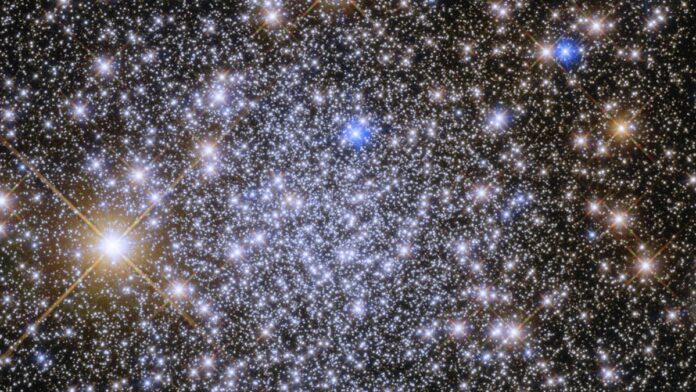A sparkling new image from the Hubble Space Telescope captures the glow of thousands upon thousands of stars in an ancient globular cluster near the heart of the Milky Way.
A globular cluster is a massive collection of stars pulled in close and tied together by their mutual gravitation, with many stars only a light-year or two away from their neighbors. The globular cluster in the new Hubble Space Telescope image, called Pismis 26, takes its name from astronomer Paris Pismis, who discovered the collection of stars at the Tonantzintla Observatory in Mexico in 1959.
Related: Hubble Space Telescope delivers holiday sparkle in new image
The stars in Pismis 26 take on a nearly spherical structure. The cluster appears to contain predominantly red stars, with a smattering of brighter blue stars along the edges. These colors are due, in part, to the cluster’s age, which is estimated at about 12 billion years, which means it contains many of the oldest stars in our galaxy, if not the universe. These stars are likely a much deeper red than the bright-blue ones that are typical of large, young, fast-burning stars that die out much sooner or the typical yellow star that straddles the line between the two.
The cluster is also heavily metallic, meaning that its stars contain higher levels of elements that are heavier than hydrogen and helium than stars like the sun do. Particularly, scientists think these stars are rich in nitrogen, which also suggests that the globular cluster’s star population spans a range of ages, according to a NASA statement.
Additionally, part of the cluster’s coloration comes from a phenomenon known as reddening, which is a result of dense stellar dust blocking shorter-wavelength blue light while allowing longer-wavelength red light to pass through more easily.
Pismis 26 is located near the galactic bulge that surrounds Sagittarius A* (Sgr A*), the supermassive black hole at the heart of the Milky Way. This part of the galaxy is especially dust-heavy, thanks to the presence of Sgr A* and its incredible gravity, as well as that of all the material surrounding it in the bulge and the dense sphere of stars it contains.
Follow us on Twitter @Spacedotcom or on Facebook.

